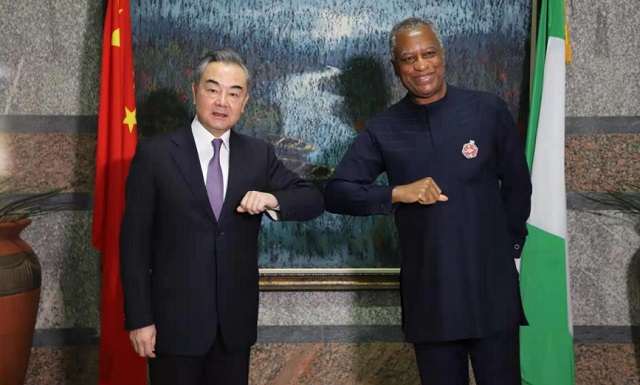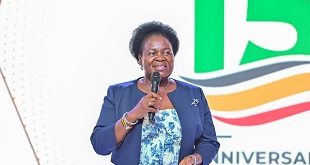
Chinese foreign minister Wang’s visit to Africa is another missed opportunity to seal deals
ANALYSIS | THE INDEPENDENT | Chinese Foreign minister Wang Yi has been on a five-nation tour in Africa that started on Jan.04 and took him to Nigeria, the Democratic Republic of the Congo, Botswana, Tanzania and Seychelles.
The visit is in line with the ministry’s 30-year diplomatic tradition by Chinese foreign ministers of paying New Year visits to Africa since 1991 and Uganda, which has many major projects hoping for Chinese financing, would possibly have been glad to be on the itinerary.
With the Chinese economy having taken a hit from the pandemic, there’s concern in African capitals that lending will dry up or decrease significantly.
President Yoweri Museveni is increasing featuring less in China-Africa arrangements. He did not participate in the Extraordinary China-Africa Summit on Solidarity against COVID-19 jointly held by President Xi Jinping and several African leaders.
Museveni was equally absent when Chinese President Xi Jinping presided over a high-profile China-Africa summit on solidarity against COVID-19 in Beijing in June last year. Leaders of African countries, as well as the secretary-general of the United Nations and the director-general of the World Health Organisation attended the meeting.
President Cyril Ramaphosa of South Africa attended together with Senegalese President Macky Sall, Egyptian President Abdel-Fattah al-Sisi, President of the Democratic Republic of the Congo Felix Tshisekedi, Algerian President Abdelmadjid Tebboune, and Gabonese President Ali Bongo Ondimba. Others were Kenyan President Uhuru Kenyatta, Malian President Ibrahim Boubacar Keita, Niger’s President Mahamadou Issoufou, Nigerian President Muhammadu Buhari, Rwandan President Paul Kagame, Zimbabwean President Emmerson Mnangagwa, Ethiopian Prime Minister Abiy Ahmed, and Chairperson of the African Union Commission Moussa Faki Mahamat.
“We pledge that once the development and deployment of COVID-19 vaccine is completed in China, African countries will be among the first to benefit,” Xi told them.
Since early March, China has provided medical supplies, including test kits and medical protective gear to more than 50 African countries as well as the African Union , and it has also sent seven medical teams to the continent to share treatment and prevention experience and help train local medical staff, according to a recent government white paper.
China said it has suspended debt repayments for 77 developing countries and regions, as it’s working with other G20 members to implement the debt relief initiative for low-income countries mostly in Africa. China has also pledged to accelerate the building of the Africa CDC headquarters to help the continent ramp up its disease preparedness and control capacity.
Uganda needs China
With increasing calls for sanctions against the Museveni government by influential human rights, freedom, and democracy campaigners and legislators in Washington, Museveni could be keen to ensure strong economic and financial ties with China.
Uganda’s oil export project which is Museveni’s legacy programme is heavily dependent on Chinese goodwill. The China National Offshore Oil Company (CNOOC) has a 33.33% stake in developing an export pipeline with the French oil major Total. In a surprise move last April, CNOOC decided against exercising its pre-emptive rights to acquire an addition shareholding from the 33.33 per cent Tullow Oil stake floated to Total E&P. The lack of interest was a setback for Ugandan negotiators who had hoped that CNOOC would counterbalance Totals growing control over its crude oil assets.
By some calculations, Uganda needs $13.6 billion to invest in its crude project; $6 billion for upstream, $3.6 billion for the EACOP, and $4 billion for a 60,000 barrel per day refinery. China has supported infrastructure development and technology transfer. Huawei laid the fibre optic cable network in most of Uganda.
China’s Exim Bank is also being courted by Museveni to finance the construction of the country’s 271-kilometre-long Standard gauge railway which has stalled for years.
 The Independent Uganda: You get the Truth we Pay the Price
The Independent Uganda: You get the Truth we Pay the Price



